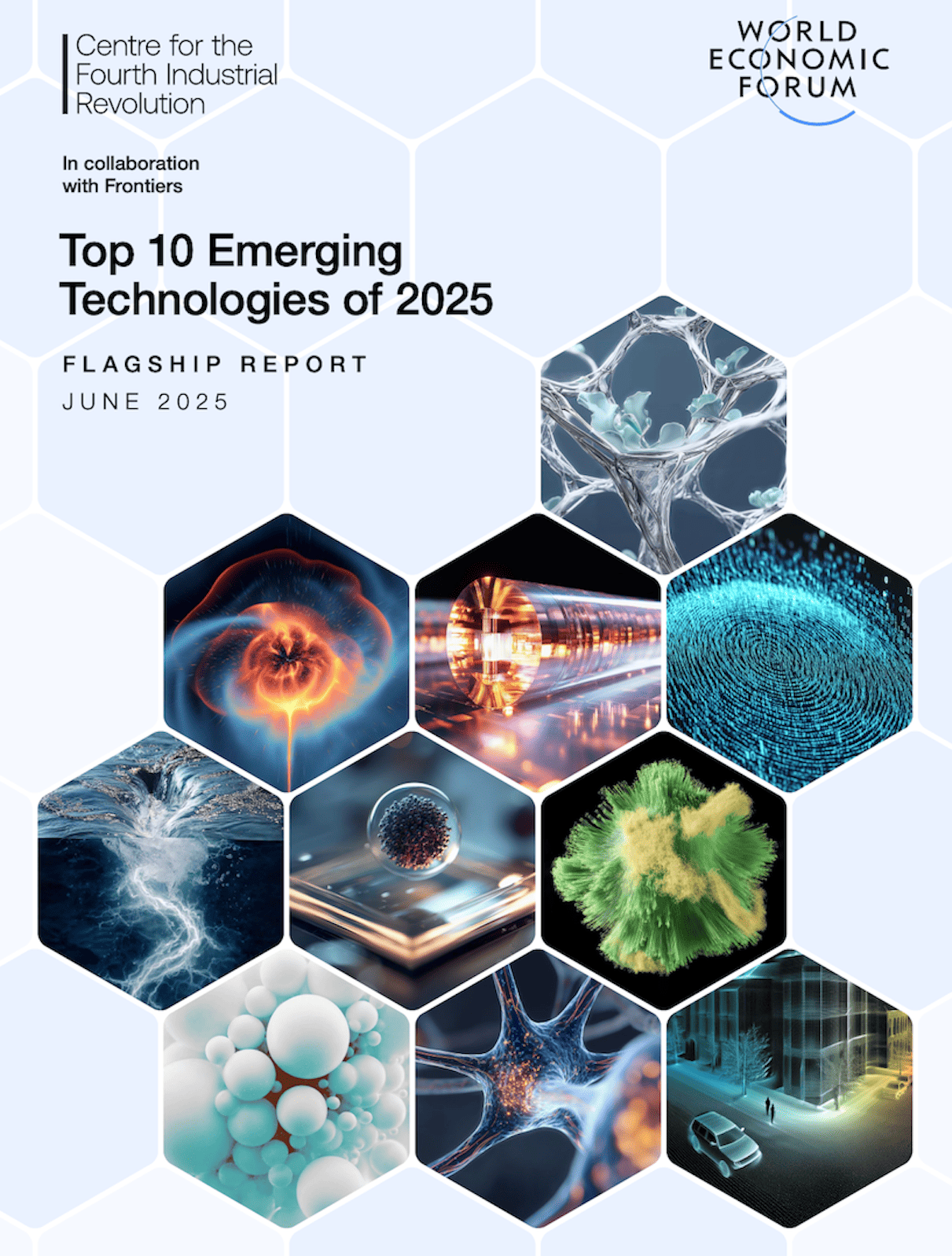
The disruptive potential of emerging technologies in 2025
The Top 10 Emerging Technologies of 2025 span a wide range of sectors, from artificial intelligence to biochemical sensors, from receptors for neurodegenerative diseases to engineered therapies.
Among the innovations with the potential to improve our lives, one stands out for its impact on agriculture: green nitrogen fixation.
10 emerging technologies with high transformative potential
The Top 10 Emerging Technologies report, published by the World Economic Forum in collaboration with Frontiers, a leading research publisher, highlights ten innovations that could reshape industries and transform societies.
Selecting the ten most promising emerging technologies from more than 250 candidates was no easy task.
The evaluation combined peer-reviewed research, citation analysis, and expert judgment to identify those with the greatest transformative potential.
Not a conclusion but a call to action
The Top 10 Emerging Technologies is not a final ranking but a call to action. The world faces complex, unforeseen challenges in an increasingly uncertain context.
Now in its 13th edition, the report aims to spotlight cutting-edge technologies that can help societies adapt and respond successfully to disruption.
It blends scientific progress, strategic impact, and ecosystem readiness, assessed by a rigorous panel of global experts.
What path will our lives take as these emerging technologies evolve?
Green nitrogen fixation, a breakthrough for agriculture
This year’s list includes technologies capable of driving sustainable growth.
It’s a valuable tool for policymakers, businesses, and civil society actors who believe that innovation can make the world more resilient and human-centered.
The emerging technology for agriculture is green nitrogen fixation.
Today, nitrogen fixation is a $200 billion market in the United States alone. It converts atmospheric nitrogen into ammonia at a scale of over 150 million tons per year, crucial for producing fertilizers that support 50% of global food production.
Decentralized plants powered by renewable energy
Green nitrogen fixation aims to cut the massive carbon footprint of conventional nitrogen production, which currently accounts for 2% of global energy use.
Both established companies and startups are now exploring green nitrogen technologies.
These alternative methods would enable decentralized production plants, making it possible to generate ammonia using local renewable energy sources, such as wind and solar.
But the strategic importance of green nitrogen goes well beyond decarbonization.
Major transformations in agriculture
Agriculture is set for its most profound transformation yet.
Roughly 80% of industrially produced ammonia is used to manufacture fertilizers. A distributed model could radically reshape agricultural supply chains and empower regions that currently depend on imported fertilizers.
Locally produced ammonia could be efficiently stored or converted on-site into fertilizer, saving energy and transportation costs. This would help stabilize fertilizer prices and improve food system resilience.
An additional benefit? It would reduce both the carbon footprint of ammonia production and the CO2 emissions linked to transport.
Who leads the market today
China currently accounts for 30% of global ammonia production, while India and Middle Eastern countries are poised to expand capacity.
Green nitrogen fixation could reshape regional dependencies and create new centers of agricultural and energy influence.
Those who develop scalable green ammonia production capacity stand to gain major strategic advantages in both food security and the shift to clean energy.
Over the next decade, leadership in green nitrogen fixation will likely come from players who can combine three core strategic capabilities:
- advanced electrochemical production
- renewable energy infrastructure
- agricultural innovation ecosystems
Emerging technologies could become the convergence point for food security, energy innovation, and climate action, forming a single transformative platform.